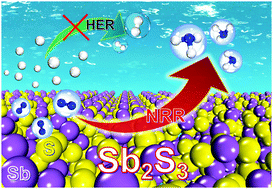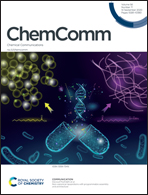A Janus antimony sulfide catalyst for highly selective N2 electroreduction†
Abstract
The antimony sulfide Sb2S3 is firstly explored as a Janus catalyst for highly selective nitrogen reduction reaction (NRR). The developed Sb2S3 nanoflowers delivered an excellent faradaic efficiency of 24.1% and a high NH3 yield of 33.4 μg h−1 mg−1 at −0.3 V. Theoretical calculations revealed that the high NRR selectivity of Sb2S3 originated from the Janus role of active Sb centers: on one hand, Sb exhibited a strong Sb5p–N2p hybridization upon initial N2 protonation, capable of effectively activating the NRR with a low reaction barrier. On the other hand, Sb could concurrently impede the hydrogen evolution by hindering the H+ adsorption.



 Please wait while we load your content...
Please wait while we load your content...